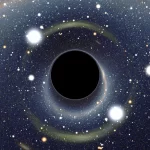Key Takeaways:
- Hibernation studies with humans could be viable within a decade, opening doors to extended space missions where crew members are in induced slumber for protection and resource conservation.
- The process of hibernation might save costs on supplies, decrease oxygen needs, and prevent muscle and bone degradation, promising a fit crew upon awakening.
- While a staple in sci-fi, hibernation research is underway; initial studies in animals show potential for inducing torpor safely.
- Hibernation might counteract muscle and bone loss in microgravity, with animals waking up from it exhibiting surprising fitness levels and minimal muscle loss.
- Apart from space travel benefits, hibernation’s pause-like effect on life processes offers intriguing prospects for medical applications, potentially aiding in treatments and surgeries.
In a visionary leap from science fiction to reality, scientists are poised to test space hibernation within the next ten years, according to a researcher from the European Space Agency (ESA).
The prospect of placing crew members into a state of protective slumber for weeks or months during long-duration space missions could revolutionize space travel, bringing with it a myriad of benefits and potential applications. This article delves into the emerging realm of hibernation studies, exploring the science behind it and its transformative implications for both space exploration and medical practices.
Hibernation, also known as torpor, offers more than just a remedy for potential boredom during extended space journeys. The financial gains are substantial, as hibernating astronauts would require minimal resources—no need for food, water, or excessive oxygen consumption.
Moreover, research suggests that bodies in hibernation may experience less wasting away than those exposed to microgravity, enabling space travelers to embark on exploration immediately upon awakening.
ESA’s Jennifer Ngo-Anh envisions the first human torpor trials happening as early as the mid-2030s, contingent upon adequate funding and meticulous fine-tuning of the process. Initial studies involving non-hibernating animals, such as rats, have demonstrated the feasibility of inducing torpor and safely reviving subjects. However, challenges remain, including the need for sustained exposure to signaling molecules, prompting ongoing refinement efforts.
The primary motivation behind pursuing induced torpor for space missions lies in addressing the detrimental effects of microgravity on astronauts’ health. Loss of bone and muscle mass poses significant challenges, even with exercise protocols in place. Hibernation could potentially circumvent these issues, as animals waking from torpor exhibit minimal muscle loss and heightened fitness levels.
The physiological intricacies of torpor contribute to its promise for spaceflight. Unlike sleep, hibernation involves reduced electromagnetic brain activity, a drastic drop in heart rate, and a decline in body temperature. Essentially, it resembles hitting a pause button on life, a state that protects against radiation damage—a critical concern during prolonged space missions.
The protective properties of hibernation extend beyond space exploration, finding application in medicine. Patients enduring long-term bed rest or medically-induced coma often face rapid physical deterioration. Hibernation’s ability to slow life processes to a minimum presents a potential breakthrough, offering a vital bridge for physicians to explore solutions without time constraints.
Alexander Choukèr, an anesthesiology expert and member of the ESA team, sees parallels between hibernation and anesthesia. Despite not fully understanding the complexities, the benefits have been evident for decades. The first human subjected to torpor will likely be an intensive care patient, paving the way for accelerated progress in both medical and space exploration domains.
While challenges persist, including the need for hibernation to function without complex life support systems, the potential rewards make this futuristic concept an exciting frontier in the realms of space travel and medicine. As humanity endeavors to expand its reach into the cosmos, the prospect of hibernation emerges as a key player in shaping the future of exploration and healthcare.


